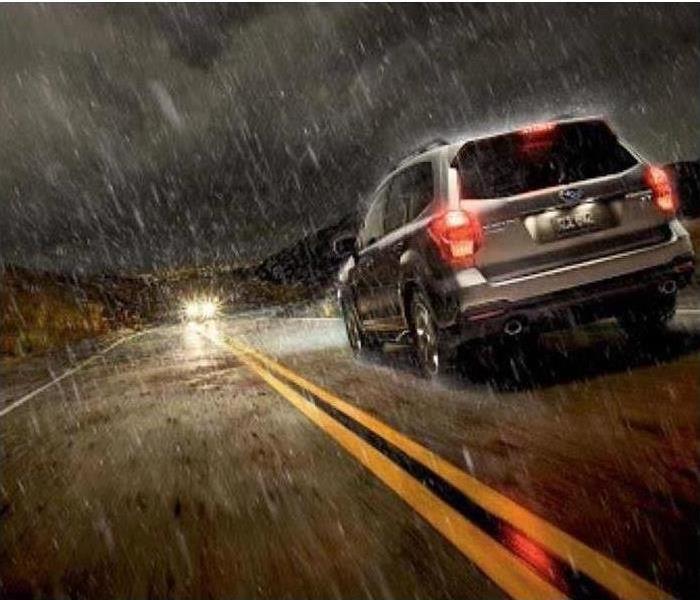Tips on Driving in the Rain
8/17/2020 (Permalink)
Did you know nearly half (47%) of all weather-related car accidents — more than 700,000 a year — are due to rain? Read below for our tips on how to drive safely in the rain.
Here are 10 tips for driving in the rain:
Step 1. Exercise caution. Engine oil and grease build-up on roads and highways over time, and when combined with precipitation, you’ve got the equivalent of an automotive Slip ‘N Slide.
Step 2. Slow down. Wet pavement causes tires to lose traction and vehicles become more difficult to handle.
Step 3. Use headlights. Always use headlights in the rain – even if it’s just a sprinkle. Headlights help you see and be seen in wet weather.
Step 4. Keep your windshield wipers in tip-top shape. Summer can wreak havoc on your blades, so get them checked before fall’s showers arrive.
Step 5. Defog your windows. Precipitation can cause your windshield to quickly fog up, so use the front and rear defrosters to maximize visibility.
Step 6. Avoid pooling water. By splashing through puddles you can impair your vision and other drivers’. Additionally, standing water often shields potholes and debris from view and it can reduce the effectiveness of your vehicle’s brakes.
Step 7. If your car begins to hydroplane, do not brake or turn the wheel abruptly as this may cause your vehicle to go into a skid or spin. Take your foot off the gas and keep the wheel straight until your car reclaims traction.
Step 8. Increase your following distance. Slick roads, wet brakes and reduced visibility can lead to collisions. Give other vehicles plenty of room and brake early with reduced force.
Step 9. Don’t use cruise control. It can cause your car to accelerate when hydroplaning and reduces driver attentiveness.
Step 10. Drive in the tracks of the car in front of you. This allows the vehicle ahead to displace any standing water that’s on the road.
By employing these safe driving techniques you can keep yourself and your passengers safe during spring drizzles and downpours. Rainy roads can be dangerous, but if we all slow down and use extra caution, rainy days might actually be a little brighter.





 24/7 Emergency Service
24/7 Emergency Service
